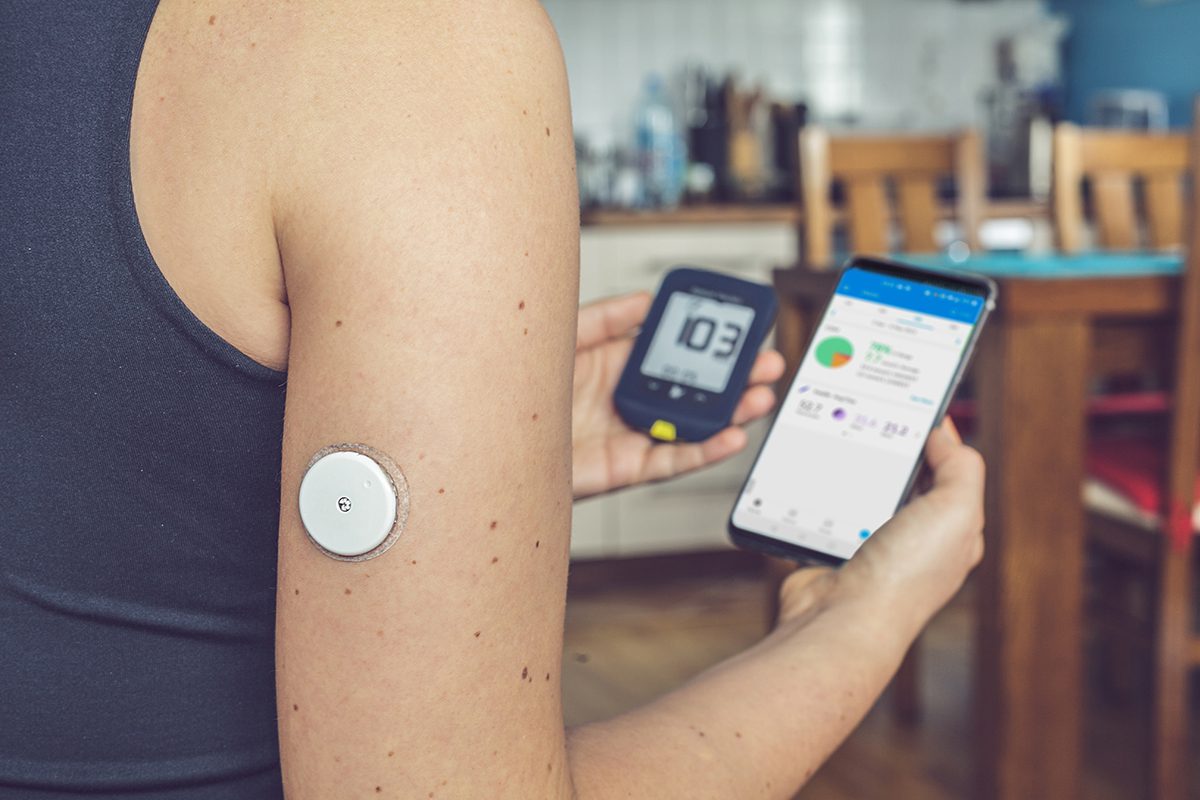CPT 99091 can be billed by a physician or qualified health professional (QHP) collecting, reviewing, interpreting, and reporting of physiologic data (e.g., blood pressure, glucose, pulse, weight) digitally stored and/or transmitted by the patient and/or caregiver to the physician or other QHCP for a minimum of 30 minutes of time spent, each 30 days. (approx. $54.22)
- Chronic Care Management (CCM)
- Principal Care Management (Specialty Care) (PCM)
- Behavioral Health Integration (BHI)
- Wellness Visits / Health Risk Assessments (AWV, IPPE, HRA)
- Transitional Care Management (TCM)
- Remote Patient Monitoring (RPM)
- General Care Management (GCM)
- Utilize CareVitality’s platform and care team
- Utilize CareVitality’s platform and your care team as well as ours
- Utilize your own platform & CareVitality’s care team
- License CareVitality’s platform
Our Turnkey RPM Telehealth Offering
Definition of Medical Device
What Are the Remote Physiologic Monitoring CPT Codes?
Collecting and Analyzing Physiologic Data by a provider
Providing Set-up and Training of device
All auxiliary personnel (including clinical staff and non-clinical) may provide education to patients on RPM services and set up of the remote physiologic device under CPT code 99453. The personnel can be either contracted or employed by the billing practitioner. This means that RPM vendors can provide the education and set-up of the device. (approx. $19.32)
CPT code 99453 can be billed only once per episode of care where an episode of care is defined as “beginning when the remote physiologic monitoring service is initiated and ends with attainment of targeted treatment goals.
– (CPT Codebook, p. 52).
16 Days of Monitoring
To bill for the collection and continued monitoring of the remote physiologic device(s). This monitoring must occur over at least 16-days of a 30-day period. RPM services can only be billed by one practitioner per 30-day period and cannot be reported for a patient more than once during a 30- day period (even when multiple medical devices are provided to a patient). (approx. $50.15)
Collecting & Analyzing Physiologic Data by clinical staff (initial time)
Remote physiologic monitoring (RPM) services involve the collection, analysis, and interpretation of digitally collected physiologic data by managing of a patient under their treatment plan requiring interactive communication with the patient/caregiver during the month. CPT Code 99457 is billable for clinical staff/physician/other qualified professional time with a patient in a calendar month for 20 to 39 minutes. (approx. $48.80) The 20 minutes includes both synchronous, real-time interactions as well as non-face-to-face care management services.)
“Interactive communication” includes real-time synchronous, two-way audio interaction that is capable of being enhanced with video or other kinds of data transmission.
Collecting & Analyzing Physiologic Data by clinical staff (add on time)
Subsequent 20 minutes of remote physiologic monitoring (RPM) services requiring interactive communication with the patient/caregiver during the month. CPT Code 99458 is billable along with for CPT 99457 for clinical staff/physician/other qualified professional time with a patient in a calendar month for each additional 20 minutes up to 2 units. (approx. $39.65)
Remote Physiologic Monitoring Calculator
| Revenue Calculator | Your Value |
|---|---|
| Annual number of Medicare patients eligible for with remote physiologic monitors | |
|
16 Days of Continuous Monitoring (U.S. Average $47.27) or select your locality (approx. 93% of RPM patients). |
|
|
RPM annual payment for CPT 99457 (U.S. average: $48.93) or select your locality below (approx. 85% of RPM patients). |
|
|
RPM annual payment for CPT 99458 (U.S. average: $39.28) or select your locality below (approx. 25% of RPM patients). |
|
| Estimated annual RPM reimbursement: | |
Reimbursement amount from the CY 2024 Physician Fee Service Final Rule averaged across 89 localities.
Learn How CareVitality Can Make a Difference for Your Organization
Since using CareVitality’s Virtual Care Management team we have not only increased revenue to our office from additional reimbursement for the CCM service codes but our MACRA/ MIPS score has increased due to the additional support they provide to help us improve our patients outcomes by providing these services in between their office visits or…
Working with CareVitality’s Care Management team has not disrupted our workflow and has improved the care we provide to our patients. They identify themselves as part of our practice and use a caller id with our practice name and phone number similar to our office to provide seamless services to our patients.
CareVitality’s Virtual Care Management team is well rounded in both medical, mental health and behavioral health services to complete comprehensive care plans to service our patients. The RNs we have worked with have had 30+ years of nursing experience and have been detailed in their work that when it comes to our providers to review…
CareVitaity’s Virtual Care Managers have helped us successfully implement our Chronic Care Management Program. Their detailed understanding of how to successfully launch a chronic care management program along with their Virtual Care Managers explaining to the patient the benefits of receiving chronic care management services coupled with putting together a comprehensive patient centric care plan…
We have used CareVitality for two years now to attest our MIPS/MACRA and they have done a great job! I would recommend them for any service they provide.
Care Vitality is an efficient Chronic Care Management company. Vanessa is very knowledgeable and the company provides conferencing and reports that will keep a Medical Practice up-to-date with the latest information from onboarding employees to CMS rules. I highly recommend Chronic Care Management for their efficiency, professionalism, and knowledge !!!
Testimonials
Additional FAQs for RPM Services
What is remote monitoring of physiologic parameters?
Remote monitoring of physiologic parameters is the monitoring and analysis of a patient’s physiologic data that is related to an acute health illness or a chronic condition.
What is considered Remote Patient Monitoring?
Examples of physiologic parameters are temperature, blood pressure, blood sugar, weight, vital signs, pacemaker information, etc.
What is remote monitoring of vital signs?
Through remote physiologic monitoring technology a patient can have their vital signs monitored frequently and accurately and notify the care team if there are any abnormalities that need to be immediately addressed.
Remote wireless monitoring is a new technology that allows the continuous recording of ward patients’ vital signs, supporting nurses by measuring vital signs frequently and accurately.
How is remote patient monitoring done?
Remote patient monitoring is done once a patient has the devices that will be used to electronically submit data to a technology system. The technology system either has the ability to accept cloud, bluetooth enabled device information and/or through OCR. Once this information is read by the technology system a sophisticated technology system will have AI built into it to notify the care team of the abnormal readings and when there needs to be an intervention by the care team. Otherwise, the care team will need to be monitoring the technology to wait for when there is an abnormal reading to know when to reach out to the patient and intervene to give additional support.
Is RPM covered by insurance?
Remote Patient Monitoring is paid for by government plans such as Medicare and the majority of Medicaid plans. Additionally, more and more commercial carriers are paying for this service including Medicare Advantage plans. Additionally, some self-insured insurance groups provide remote monitoring to their employees to keep their insurance costs down.
What is the difference between telehealth and remote patient monitoring?
Remote patient monitoring is the shorthand name people use commonly call remote physiologic monitoring and/or remote therapeutic monitoring. Remote patient monitoring is a form of telehealth to allow providers to monitor, report and analyze the data for chronic conditions and acute conditions to increase access to care in a more timely manner and decrease healthcare costs. A team of Remote Patient Monitoring nurses provide telehealth services by regularly reviewing monitoring data and contacts patients to assess health and progress toward health care goals.
What are common conditions that are used for remote physiologic monitoring?
Some chronic conditions that commonly benefit from RPM include hypertension, diabetes, congestive heart failure, and obesity while acute conditions may consist of more fleeting or mild illnesses such as asthma, nausea, or the common cold.
Is remote patient monitoring considered telehealth?
Yes, remote patient monitoring is a component of telehealth. Other components of telehealth are telemedicine and chronic care management.
Is remote patient monitoring effective?
Remote patient monitoring is reducing the risk of hospital readmissions. According to the University of Pittsburgh Medical Center, RPM helped to reduce its readmission rate by 76%.
How do I start remote patient monitoring?
If you are a practice looking to provide remote patient monitoring services you would need to determine a platform that would be the best fit to use to collect the data from your patients, then organize who would be your care team to provide these services, put processes in place for this care team to follow including what needs to be discussed in gaining written or verbal consent to start remote patient monitoring with your patients. If you need help deciding which system to choose you can always seek out a consultancy like EHR & Practice Management Consultants, Inc. to help you choose the right system.
What does a remote patient monitoring nurse do?
Nurses help comprise as part of the care teams when providing remote patient monitoring. RNs or higher are permitted to complete comprehensive care plans for the conditions being monitored which then need to be signed off by the provider before ongoing remote patient monitoring is continued in the months to come. Also, RNS, LPNs and LVNs can provide ongoing remote patient monitoring. They would work with the software tool provided in order to be able to alerted to each of the patient’s readings from their devices and can contact the patient to discuss the readings, symptoms and offer additional educational information. Also, if needed can escalate the information provider caring for the patient if a revision of the care plan needs to be done and/ or further direction needs to be given by the provider overseeing the patient for the specific condition. This ongoing monitoring support given to the patient provides additional care and helps the patient try and stay on track and hopefully keeps them out of the ER and the hospital.
How much does rpm cost?
RPM costs vary by time spent per calendar month. RPM services cost on average $50 for the initial 20 minutes of service and an additional $40 for additional 20 minutes of service that can be billed up to triceps in a given calendar month. Therefore, the minimal charge once the full scope of service and time intervals are met according to Medicare can range from $50 up to $130 for the maximum amount of time spent. The fees may vary slightly depending on the location of where the provider resides to care for the patient due to the physician fee schedule varies by location (states / locale). Traditional Medicare pays 80% of the service whereas the secondary insurance plan or the patient is responsible for the remaining 20%. Most Medicare Advantage plans pay for the service in entirety. If RPM is paid for by an employer then based on the plan with the employee the organization may pay for this service completely since it helps keep their patients happier and healthier at work.
What is remote monitoring in clinical trials?
In clinical trials of medical devices or drugs a patient may need to be monitored to track various physiologic or non physiologic items. Remote monitoring makes it easy for clinical trials to capture this information through cloud based, bluetooth enabled or through OCR data capture to help the clinical trial gather the pertinent data needed for the clinical trial to proceed in a cost and time efficient manner.
Get In Touch
Contact Us Today to Learn How We Can Successfully Assist You in Participating in the Remote Physiologic Monitoring (RPM)




